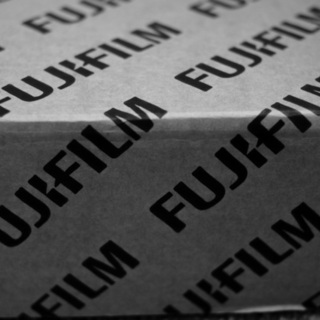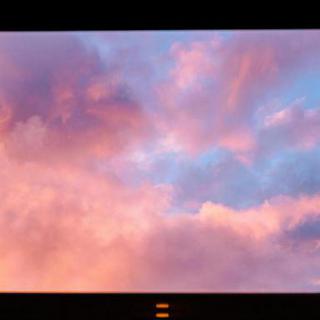Process
Recapturing inspiration through constraints
Breaking out of a creative lull by making things harder?
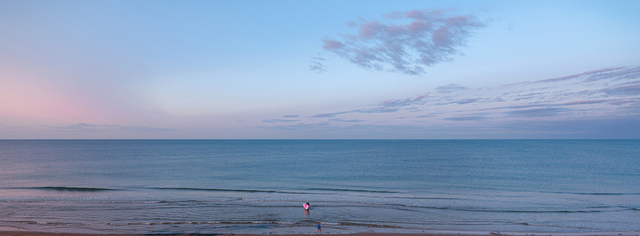
“The enemy of art is the absence of limitation.”
There’s a maxim that constraints breed creativity and adding constraints is oddly often a good way of getting out of a creative rut: something I’ve been trying over the past week or so.
The ‘constraints breed creativity’ line is an alliterative, perhaps snappier, version of the Orson Welles quote above but both get at the same thing: a lack of limits can actually paralyse the artistic/creative process. Creativity needs something to create against or from.
Following another photographic lull recently I got the little spark of inspiration I needed, through adding a constraint.
Kyle McDougall’s recent video reviewing a new 6x17 film camera rekindled a long-held desire to own a 6x17 film camera (mostly thanks to Nick Carver’s beautiful 6✕17 work) although price and practicalities have always held me back.
Thought process triggered though, I arrived at the more sensible conclusion that my existing GFX bodies take excellent 6✕17 (or 65:24) ratio images, so why don’t I just use them?
Indeed.
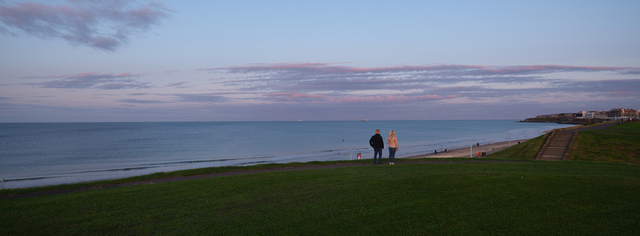
Vague spark of inspiration in mind, I grabbed my Fujifilm GFX 50R, which had the wide-angle GF23mm F4 lens (good for pano ratios) already attached and once the kids were asleep, dashed out to catch the last light by the sea front.

I was too late for the best light but it was nice to get out with the camera and a purpose, even if only for 20–30 minutes.

By the time I’d done a short walk along the front and back, the light was well and truly faded so I headed home with a bit of enthusiasm restored and a handful of OK images.

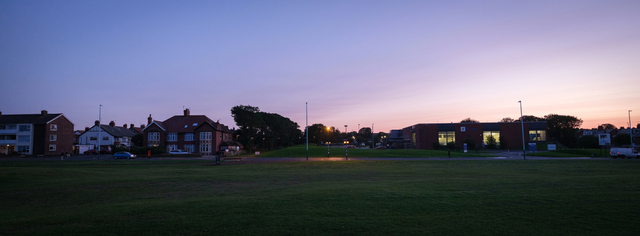
A couple of days later we took a morning walk down to the North Shields fish quay and I again grabbed the 50R, this time with the more standard focal-length GF63mm F2.8.
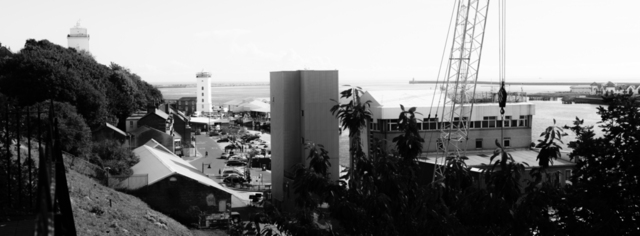
With better light, a different focal length and different subjects, I enjoyed the challenge of finding compositions that worked for the wide panoramic format as we walked around.
Working on them in Lightroom a few days later, I found that an image looking down over the river Tyne (below) worked really nicely using a ‘Minimal soft’ preset I’ve created over the years as a base.
The preset uses Fujifilm’s Acros+R process as a starting point and pulls shadows right down, with highlights up high for a punchy effect that then gets softened with some negative clarity. It’s a simple set of changes that (I feel) can really pull out the atmosphere in the right photographs.
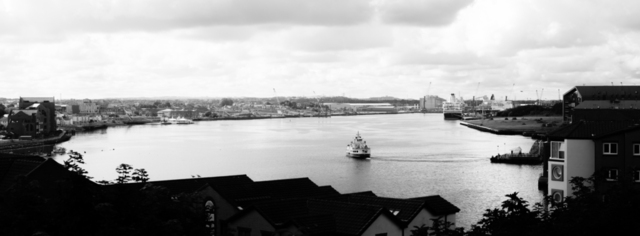
As I worked, I found a set of 8 images that all complement each other in this same style, documenting our short walk down from North Shields and along the fish quay.
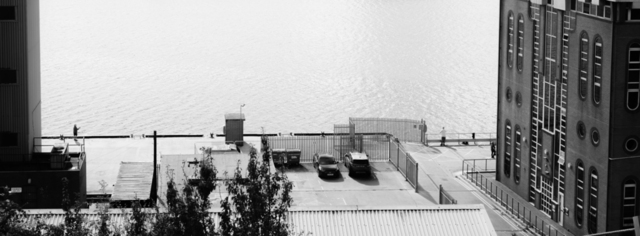
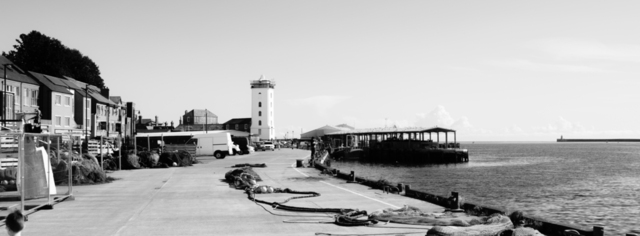
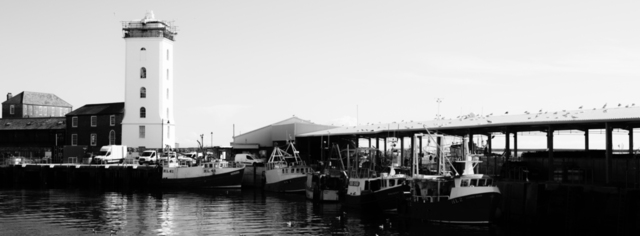
The following two images are different compositions on the same essential viewpoint and so I should probably have the courage to just choose one of them, but I like both for different reasons.
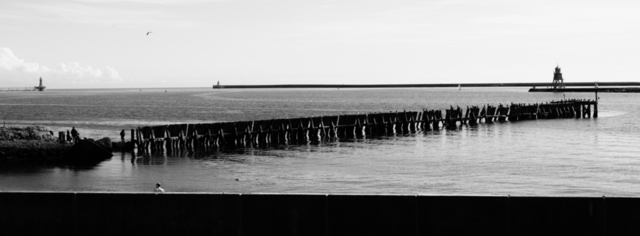
This first I like thanks to the wall in silhouette along the bottom of the frame, with the man in a light shirt just poking out from the beach below. I’ve taken this general view plenty of times but this composition was new to me and I think it works quite well in this high contrast B&W.
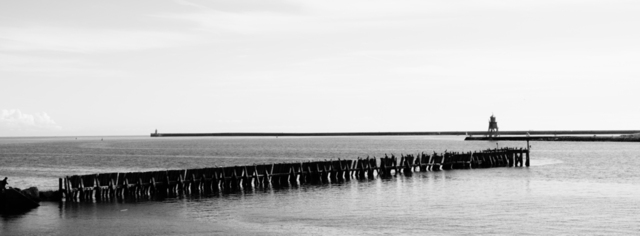
This second version is more in line with how I usually end up photographing this scene: keeping the land out of it and focusing on the more minimal composition of sky and water, with angular piers and walls crossing through. It's a calmer composition; more open.

So, did a new constraint breed creativity?
I needed something to get me out with the camera, taking more than family snaps and I managed that. But was it adding the constraint, or was the fact I watched a photography video on Youtube for the first time in a while indicative that I was already coming out of a slump?
I think there’s been a combination but without doubt, adding a constraint on myself (only shooting in wide pano ratio in this case) spurred me to get the camera out and see what happened.
Sometimes that’s all that’s needed: any little thing that gets me out of the house, with a camera. Once I’m out, camera in hand, the love of photography can take over again.
None of these images are portfolio pieces, but that’s fine.
The point wasn’t to take great photographs (necessarily). The point was to take photographs.
And once I’m taking photographs, who knows? It can only increase my chances of taking a good one.
